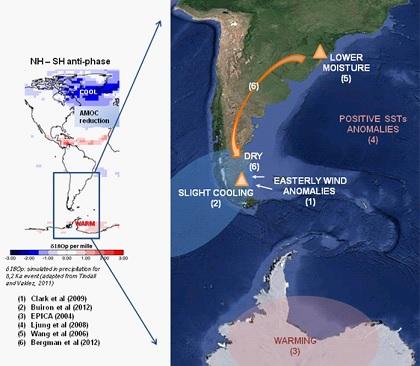Irurzun M.A., Orgeira, M.J., Gogorza, C.S.G., Sinito, A.M., Compagnucci,R. and Zolitschka B.
2 014
Geophysical Journal Internationaldoi:10.1093/gji/ggu155
Lake sediments are excellent sources of palaeoenvironmental and palaeoclimatic information because they provide continuous and high-resolution records. South America is of particular interest because it is the only landmass that stretches southward into the Pacific and Atlantic Oceans towards Antarctica. The aim of this study is to explore the relationship of magnetic parameters with elemental and palaeobiological data of Laguna Potrok Aike to develop a model of lake-level changes and related hydrological and climatic fluctuations. Magnetic measurements were performed on subsamples from 15 500 cal. BP to the present, and associated rock magnetic parameters were calculated to infer magnetic mineralogy, concentration and grain size. According to the model, parameters dependent on magnetic concentration and grain size are directly related to lake-level changes. During dry periods, the remanent coercivity displays high values, whereas the proportion of magnetite is relatively low. Low percentages of greigite are observed, indicating that the water of the lake was stratified at least four times during the studied period, at approximately 10 300, 8900, 8500 and 8300 cal. BP. The preservation of greigite by inhibiting its complete transformation into pyrite is associated with a rapid burial that occurs with high sedimentation rates. Thermal stratification could be caused by a slight cooling in the area triggered by a weakening of the Westerlies and/or low activity of the sun, sum to the effect of a flood of melt water in the North Atlantic.
https://drive.google.com/file/d/0BwWYY8erizQ-WHFZeEUwaHdlUnc/view?usp=sharing

